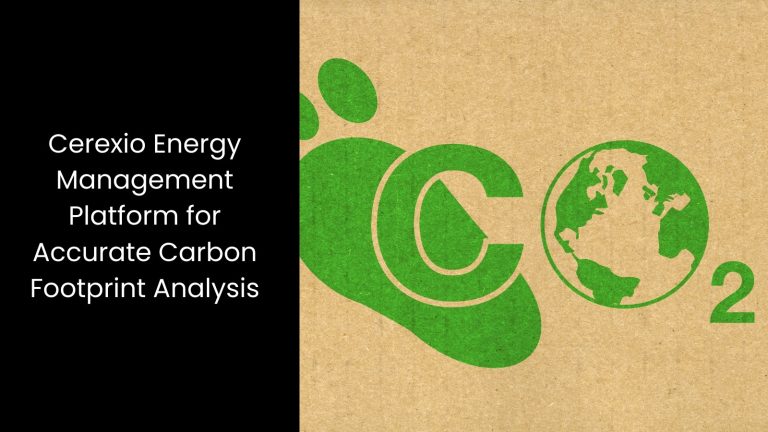No matter what industry you belong to, you always have to be mindful of the environment. This means your business and its processes must adhere to the environmental standards set by governments and industries. This is why the manufacturing realm in today’s world tends to conduct a special sort of analysis: Carbon Footprint Analysis.
This article will act as a guide for you to understand manufacturing carbon footprint analysis and its benefits for this specific industry.
We will know
Exploring Carbon Footprint Analysis

- This particular analysis measures the amount of greenhouse gases, especially carbon dioxide, that a company or activity releases into the atmosphere.
- It is important for the industrial world because it helps businesses understand their impact on climate change and find ways to reduce their emissions. This not only benefits the environment but can also save money by making operations more efficient and meeting government regulations.
- However, it is quite challenging for manufacturing companies. Let us explain why.
- The main reason is that it requires detailed data on all parts of the production process, including energy use, raw materials, and waste management. This is not possible without proper guidance from industry experts and suitable tools.
- According to manufacturing experts, the most convenient way to do this analysis is by using specialised software and tools that can track and calculate emissions. This analysis is usually done by environmental consultants, engineers, or dedicated sustainability teams within a company.
- In this fast-paced manufacturing realm, conducting carbon footprint analysis has become an immensely crucial step. With this approach, the industrial world can take significant steps towards becoming more sustainable and environmentally friendly.
Understanding the Regulatory Environment in Singapore

- In Singapore, there are strict regulations regarding carbon footprint calculations. On January 1, 2019, the Carbon Pricing Act (CPA) and its regulations were first implemented. This is where they introduce the carbon price for the industrial world. As per this, a strong framework for measuring, reporting, and verification (MRV) lies in the carbon pricing mechanism.
- Singapore has boosted its climate ambition to achieve net zero emissions by 2050, and the Parliament executed amendments to the Carbon Pricing (Amendment) Act to meet this goal.
- As per this implementation, all industrial establishments with yearly direct greenhouse gas emissions of at least 25,000 tonnes of carbon dioxide equivalent (tCO2e) are subject to the carbon tax.
- In order to allow companies time to adapt, the first carbon tax rate was set at $5 per tonne for the years 2019 to 2023. The rates of the carbon tax will increase as follows:
- $25 per tonne in 2024 and 2025
- $45 per tonne in 2026 and 2027
- There is an estimated rate of $50 to $80 per tonne by 2030.
Why is It Necessary to Conduct a Manufacturing Carbon Footprint Analysis?

Reducing Environmental Impact
This is undoubtedly the main reason for conducting a manufacturing carbon footprint analysis in Singapore.
Carbon emissions from manufacturing processes release greenhouse gases like carbon dioxide into the atmosphere, leading to global warming and climate change. These changes cause negative impacts such as rising sea levels, extreme weather events, and the loss of biodiversity.
Singapore is an island nation. Therefore, rising sea levels pose a significant threat to this country. This will potentially lead to flooding and the displacement of communities. It goes without saying that increased temperatures can worsen air quality, impacting public health by increasing respiratory problems and heat-related illnesses.
When there is a systematic method to understand and measure the carbon footprint of manufacturing processes, it helps companies identify areas where they can reduce greenhouse gas emissions. It will contribute to the fight against climate change and environmental degradation.
This way, companies not only protect the environment but also improve the quality of life for the general public in Singapore.
Regulatory Compliance
The latter is another reason for conducting a manufacturing carbon footprint analysis in the Singaporean industrial ecosystem.
You may understand that the government of Singapore and international bodies are increasingly implementing regulations and policies aimed at reducing carbon emissions to combat climate change.
Singapore, as part of its commitment to global environmental agreements, has set strict regulations to limit greenhouse gas emissions. Conducting a carbon footprint analysis ensures that companies comply with these regulations, avoiding potential fines and sanctions.
In a way, when measuring their carbon emissions, companies can identify areas where they need to improve to meet legal requirements. This not only helps them avoid penalties but also demonstrates their commitment to sustainability.
Not to mention that staying compliant with regulations can enhance a company’s reputation, making it more attractive to environmentally conscious consumers and investors. Non-compliance can lead to legal troubles, financial losses, and damage to a company’s public image.
Therefore, this carbon footprint analysis is sort of laying the foundation for the brand reputation while complying with the law and regulations.
Cost Savings
Although it is not highlighted much, cost savings are also a major reason for conducting a manufacturing carbon footprint analysis from the manufacturer’s end. Let us explain how.
A larger carbon footprint means more energy and resources are being used inefficiently, which increases costs. For example, excessive use of electricity, fuel, and raw materials not only leads to higher emissions but also raises the company’s operational expenses. Sometimes these are not as necessary as they seem to be. This is why a proper evaluation of its necessity makes sense in this scenario.
Identifying inefficiencies in energy use and resource management through this carbon footprint analysis can lead to significant cost savings. As this analysis can pinpoint areas where energy is wasted or processes are not optimised, manufacturing companies can take steps to reduce energy consumption and improve efficiency.
This might involve upgrading to energy-efficient machinery, implementing better waste management practices, or optimising supply chains. Reducing energy consumption and optimising processes can lower operational costs by cutting down on utility bills and material expenses.
This indicates that it generates lower levels of waste and higher levels of efficiency at the same time.
Investment and Funding
If there are some implementations and actions to be taken, then here comes the necessity for investment and funding.
Investors are increasingly considering environmental, social, and governance (ESG) factors in their investment decisions. This means they look at how companies manage their environmental impact, social responsibilities, and corporate governance.
A thorough carbon footprint analysis can improve a company’s ESG rating by showing that it is committed to reducing its environmental impact. This makes the company more attractive to investors who prioritise sustainability.
If they can demonstrate a clear understanding and management of their carbon emissions, companies can build trust with investors, showing they are forward-thinking and responsible. This can lead to better funding opportunities, as more investors are willing to support businesses that align with their values. Plus, having a strong ESG rating can open doors to specific green investment funds and grants designed to support sustainable practices.
Cerexio Energy Management Platform for Accurate Carbon Footprint Analysis

Considering the rising necessity for adherence to environmental standards and regulations, Cerexio has introduced a robust software solution named ‘Energy Management Platform’ that aids manufacturers in conducting carbon footprint analysis, energy consumption, predictive maintenance, energy reduction suggestions, investment planning, etc. This platform consolidates every detail under one canopy and offers powerful insights into your processes from the perspective of energy management.
Saving Environment and Business via Carbon Footprint Analysis

It is important for the industrial world to shoot the arrow targeting high rates of profitability, yet they must keep the sustainability promise as well. There is no proper development without respecting the environment and the well-being of the general public. Holding hands with suitable tools is a wise strategy to take inspiration from when it comes to conducting carbon footprint analysis.
